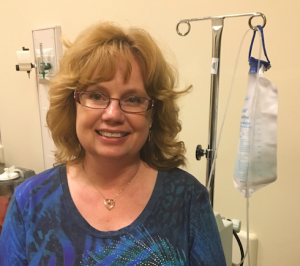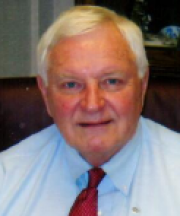Registered Nurse and Nurse Educator
Mentor, Susan England
 Susan holds a Master’s degree from the University of Oklahoma in Nursing Education and is the Coordinator of the Practical Nursing Program at Tulsa Tech, the oldest and largest technology center in Oklahoma’s nationally acclaimed CareerTech system. Before becoming an educator, she worked in hospitals and clinics, first as a Licensed Practical Nurse, then as a Registered Nurse. Susan earned her BSN and MS while she worked full-time, a career path followed by most people who get advance degrees in nursing.
Susan holds a Master’s degree from the University of Oklahoma in Nursing Education and is the Coordinator of the Practical Nursing Program at Tulsa Tech, the oldest and largest technology center in Oklahoma’s nationally acclaimed CareerTech system. Before becoming an educator, she worked in hospitals and clinics, first as a Licensed Practical Nurse, then as a Registered Nurse. Susan earned her BSN and MS while she worked full-time, a career path followed by most people who get advance degrees in nursing.
Nursing is an important profession because nurses provide the majority of patient care in hospitals, nursing homes, ambulatory care sites, and other health care settings. In her article, Susan talks about what it is like to be a nurse and work with patients in these places where the job can be stressful and challenging. She also points out other areas of health care where there are regular hours and the environment is less stressful. Although the pay is good, most nurses enter the profession because they get a lot of personal satisfaction from being able to help their patients and make a difference in their lives.
The nursing program Susan heads at Tulsa Tech is something you can explore in high school if you have an interest in nursing or one of the other health sciences. Tulsa Tech has affiliations with area high schools, so you can take introductory health science classes that will give you a better idea of what it is like to be a nurse. These classes will also shorten the time you have to spend in the nursing program. Depending on how you set up your class schedule and how many classes you attended in high school, you can graduate in anywhere from twelve to eighteen months. Plus, the tuition is free for high school students and there are many financial aid opportunities for adults, including a new program called the Accelerating Independence Scholarship. This is a “Gap Scholarship” that covers 100% of the tuition for area students with a GED or high school diploma and a 2.O GPA who begin classes before their twenty-fourth birthday. There are also other scholarships and financial aid packages available to nursing students. So even if you are over twenty-four, you can likely get much of your tuition covered.
Overview
After I graduated from high school, I had a series of jobs including working in restaurants and even a furniture factory. But I wanted to do more with my life and starting doing research on different careers. I decided I wanted a career where I thought I would always be employed and where I could travel and live in other parts of the country. I found that nurses were in high demand in every part of the US and that the job paid well. At the time I decided to become a nurse, I was living in Lincoln, Nebraska and enrolled in Central Community College to get my Licensed Practical Nursing (LPN) certificate. It only took me one year to get my certification even though I worked full time while I was going to school. After I graduated, I moved to Lawton, Oklahoma and took a job at a local hospital. Then I began to work on my Bachelors degree at the University of Oklahoma while I still worked full time as an LPN. Like many hospitals, mine reimbursed me for my tuition. After I became a RN, I began to take graduate classes at OU and earned my Masters of Science in Nursing Education. This program was offered over the internet like many graduate degree programs in nursing, which made it easier for me to work full time as an RN while I was completing my graduate degree. After I got my Masters in Nursing Education, I took a job at Tulsa Tech as the coordinator of their Practical Nursing program.
The Professional Levels in Nursing
There are two types of nursing licensure. The first is a Licensed Practical Nurse (LPN), the program we teach at Tulsa Tech. LPNs are entry level nursing positions where the nurse provides basic medical and nursing care such as checking blood pressure and inserting catheters, ensuring the comfort of patients by helping them bathe or dress, discussing health care with patients, and reporting status of patients to registered nurses and doctors. Texas and California call these same positions LVNs, which stands for licensed vocational nurses.
The second type of licensure is a Registered Nurse (RN). The education path for this license can be through a 2-year Associate Degree program (ADN) or a 4-year Bachelor’s degree (BSN). RN’s coordinate plans for patient care, perform diagnostic test and analyze results, instruct patients on how to manage illnesses after treatment, and oversee other health care workers including LPNs.
In my experience, a person who attends an LPN program first, then goes on for their RN comes out with much stronger nursing skills than a person who goes straight into an RN program. In many cases, hospitals prefer this route as well, as the LPN programs focus on the personal skills in nursing.
Graduate degrees, like a master’s and doctorate, are another educational path in nursing. Graduate programs will equip you with the skills and advanced training you need to give high-quality nursing care in a specialized role, such as nurse practitioner. Earning your graduate degree can qualify you to deliver many of the same health care services that physicians do, which is particularly important in today’s health care field. Physicians may have packed schedules or cost too much for some patients making advanced practice nurses and physician assistants (PAs) a great alternative. You can also do as I did and get a graduate degree in nursing education and help train the next generation of nurses. I always tell the audience at our Tulsa Tech graduations that we are graduating the nurses who will be taking care of the rest of us in the auditorium one day.
So you can see that once you complete your LPN program at Tulsa Tech, you have just taken the first step in a career that offers many opportunities where you can learn new things your entire life and continue to advance your career.
What You Do Each Day as an LPN
LPNs work with patients of all ages and in a variety of conditions. Their specific duties depend on where they work. For example, there is a big difference between the duties of a nurse in a hospital or ER compared to a nurse working in an outpatient clinic. So for this example, I have summarized the duties of LPNs working in a hospital, which from my experience is one of the most challenging places for an LPN to work.
- Administer oral and intravenous medications
- Chart in the medical record
- Take the patient’s vital signs
- Change wound dressings
- Collect specimens such as blood, urine, sputum, etc.
- Insert and care for urinary catheters
- Care for patients with tracheostomy tube and ventilators
- Insert and care for patients that need nasogastric tubes
- Give feedings through a nasogastric or gastrostomy tube
- Care for ostomies, a surgical hole for intestinal waste
- Monitor patients for a change in clinical condition
- Call the physician if needed
- Perform CPR in emergencies
- Are supervised by an RN
LPNs in hospitals usually work 12-hour shifts, 3 days a week. Because hospitals are open 24/7, you will have to take your turn at working on weekends and holidays and will spend some holidays with your hospital family rather than your own family. I have some graduates who don’t like working these kinds of shifts and instead decide to work in clinics, schools, or some large companies where they have regular business hours.
The stress from nursing comes in part from having to meet time deadlines. Patients must get their medicines at the proper time each day no matter what else you are doing or what you patient load may be on a particular day. You are also dealing with different situations you cannot predict and often having to come in contact with and control a number of different body fluids from patients as well as dealing with the patient’s family. So above all else, you must have a passion for helping others. If you have that desire, the career will be a rewarding one despite some of the challenges.
Where You Can Work
With an LPN certification, you’ll have the credentials to explore different career paths. While many entry-level nurses find work in hospitals, several other types of health care facilities need skilled LPNs.
- Nursing care facilities treating elderly patients including long-term rehabilitation and care for patients recently discharged from a hospital.
- General medical and surgical hospitals. Some of the most common settings in hospitals include surgery, the maternity ward or the emergency room.
- Physicians’ offices where one benefit is regular hours compared to a hospital shift. You’ll spend your time preparing patients for exams, giving injections, dressing incisions and conducting clerical duties, like keeping patient records.
- Home health care nursing where nurses provide patient comfort in the home, rather than in a facility, and also help manage any medical equipment that the patient needs.
- Community care facilities that differ from nursing care facilities in that no medical care is given to patients at the facility. Responsibilities at a community care facility generally have more to do with patient comfort, like bathing, dressing and assisting with daily life.
Tulsa Tech’s Practical Nursing Program
As shown in the table below, the curriculum provides both theory and clinical experiences for the development of skills and understanding nursing concepts necessary to provide safe, effective nursing care.
The program is delivered in 5 blocks of instruction, combing several courses in each block. New classes begin approximately every 3-5 months and take anywhere from 12-18 months. The classes market by the * are the classes that you can take in high school before you begin the adult program. Our Tulsa Tech program takes from twelve to eighteen months to complete depending on how you set up your class schedule and if you took the introductory courses we offer as an extended curriculum for participating high schools.
High school students living in the Tulsa Tech school district are not charged tuition for these classes.
- Medical Terminology *
- Anatomy and Physiology*
- Long Term Care Assistant
- Concepts of Nursing*
- Fundamentals of Nursing
- Basic Nursing Pharmacology
- Clinical I Basic Nursing Pharmacology
- Medical Surgical Nursing
- Clinical II – Medical Surgical I Nursing, Part A & B
- Medical Surgical Nursing II
- Clinical III – Medical Surgical II Nursing, Part A & B
- Maternal/Newborn Nursing
- Pediatric Nursing
- Mental Health Nursing
- Clinical IV Maternal/Newborn, Pediatric and Mental Health
- Clinical V – Transition to Practice/Preceptor
Cost of the Program
Without any financial aid, the cost for tuition is $5,852.00 plus $1,614.00 for books and supplies. But there are many financial aid programs available to Tulsa Tech students. In many cases, all or most of this cost can be covered. But you have to know how to navigate the system. All students first complete the Free Application for Federal Student Aid (FAFSA) and have counselors at Tulsa Tech who will help you fill out this form and apply for scholarships from beginning to end. Plus, the tuition is free if you qualify for a new program started in 2014 called the Accelerating Independence Scholarship. This is a “Gap Scholarship” that covers 100% of the tuition for area students with a GED or high school diploma and a 2.O GPA who begin classes before their twenty fourth birthday.
Summary
From my own personal experience, I have found that nursing is a rewarding career where every day you can see how your work helps your patients. It is a job that also pays well and one where there is strong demand in all regions of the country if you want to experience what it is like to live in other places. Nursing can be challenging and stressful at times especially if you work in a hospital or ER. But there are other options in clinics and doctors’ offices where there is less stress and a normal work schedule. If you qualify, the cost of training to be an LPN can often be entirely paid for through financial aid programs at Tulsa Tech and then by tuition reimbursement programs offered by many employers if you decide you want to become a RN and take classes while you are working like I did. So it is very possible for you to reach the higher levels in nursing without having to incur any student debt.
US Department of Labor Salary Statistics for Nurses
Licensed Practical and Licensed Vocational Nurses
In May 2015, the median annual wages for licensed practical and licensed vocational nurses in the top industries in which they worked were as follows:
| Government | $44,550 |
| Nursing and residential care facilities | 44,330 |
| Home healthcare services | 44,060 |
| Hospitals; state, local, and private | 42,010 |
| Offices of physicians | 39,010 |
Registered Nurses
The median annual wage for registered nurses was $67,490 in May 2015. The median wage is the wage at which half the workers in an occupation earned more than that amount and half earned less. The lowest 10 percent earned less than $46,360, and the highest 10 percent earned more than $101,630.
In May 2015, the median annual wages for registered nurses in the top industries in which they worked were as follows:
| Government | $72,100 |
| Hospitals; state, local, and private | 69,510 |
| Home healthcare services | 63,840 |
| Offices of physicians | 60,820 |
| Nursing and residential care facilities | 60,370 |
Job Outlook for LPNs and RNs
Employment of registered nurses is projected to grow 16 percent from 2014 to 2024, much faster than the average for all occupations. Growth will occur for a number of reasons.
Demand for healthcare services will increase because of the aging population, given that older people typically have more medical problems than younger people. Nurses also will be needed to educate and care for patients with various chronic conditions, such as arthritis, dementia, diabetes, and obesity.
In addition, the number of individuals who have access to health insurance is expected to continue to increase because of federal health insurance reform. People who previously were uninsured or found treatment to be cost prohibitive will obtain health insurance and have access to primary and preventive care services. More nurses will be needed to care for these patients in offices of physicians, clinics, and other ambulatory care settings.
The financial pressure on hospitals to discharge patients as soon as possible may result in more people being admitted to long-term care facilities and outpatient care centers, and greater need for healthcare at home. Job growth is expected in facilities that provide long-term rehabilitation for stroke and head injury patients, and in facilities that treat people with Alzheimer’s disease. In addition, because many older people prefer to be treated at home or in residential care facilities, registered nurses will be in demand in those settings.
Growth also is expected to be faster than average in outpatient care centers, where patients do not stay overnight, such as those, which provide same-day chemotherapy, rehabilitation, and surgery. In addition, an increased number of procedures, as well as more sophisticated procedures previously done only in hospitals, are being performed in ambulatory care settings and physicians’ offices.







